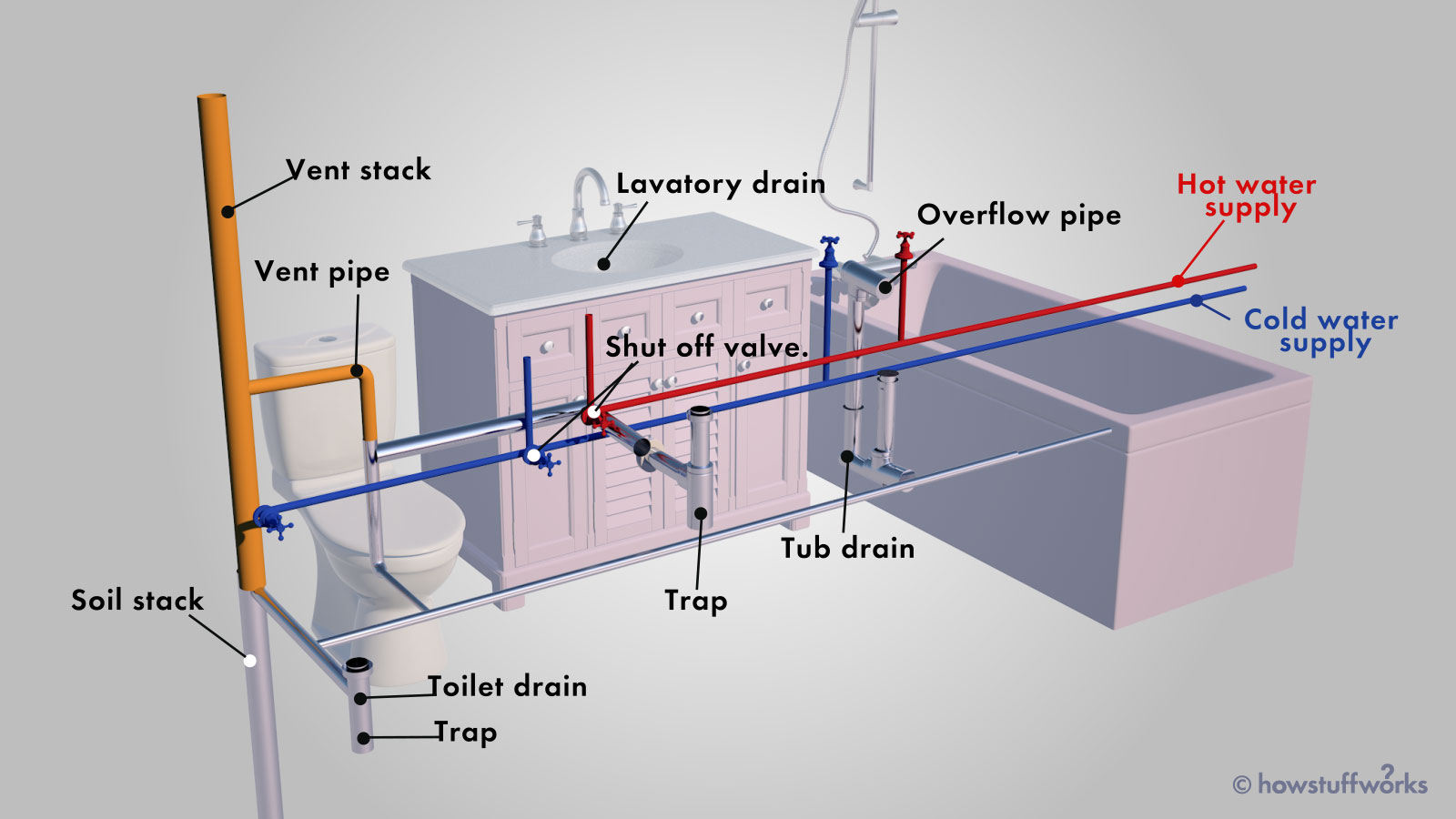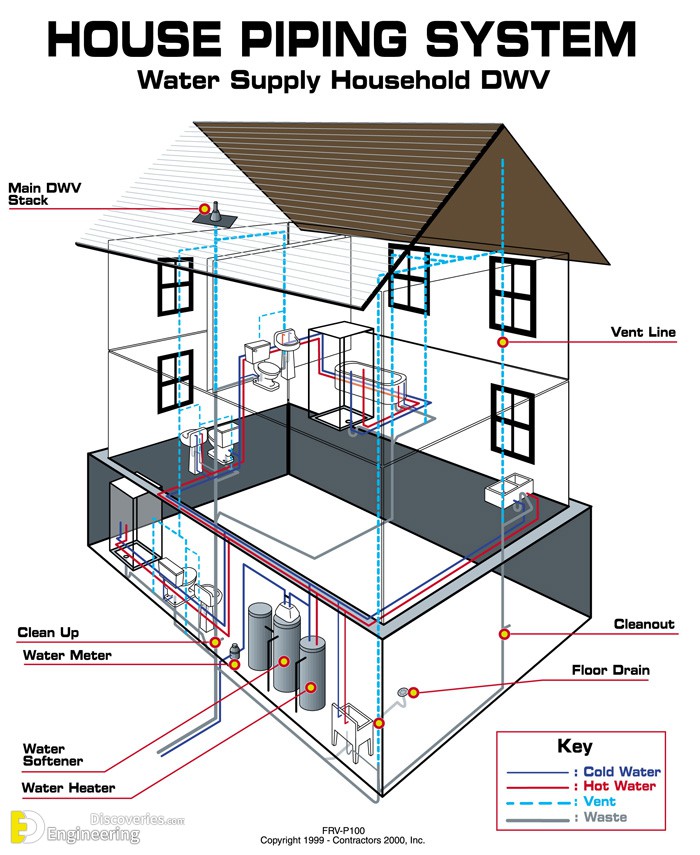Why The Structure of Your Home's Plumbing System Matters
Why The Structure of Your Home's Plumbing System Matters
Blog Article
This great article on the next paragraphs on the subject of Exploring Your Homes Plumbing Anatomy is extremely compelling. You should see for yourself.

Understanding how your home's plumbing system works is vital for every single house owner. From providing clean water for alcohol consumption, food preparation, and bathing to safely getting rid of wastewater, a properly maintained plumbing system is crucial for your family members's health and wellness and comfort. In this comprehensive guide, we'll explore the elaborate network that composes your home's plumbing and offer pointers on maintenance, upgrades, and dealing with typical concerns.
Introduction
Your home's plumbing system is greater than simply a network of pipes; it's a complicated system that guarantees you have accessibility to clean water and efficient wastewater removal. Recognizing its parts and just how they interact can help you protect against pricey repairs and guarantee every little thing runs efficiently.
Basic Components of a Plumbing System
Pipes and Tubes
At the heart of your pipes system are the pipelines and tubing that carry water throughout your home. These can be made from different products such as copper, PVC, or PEX, each with its benefits in regards to durability and cost-effectiveness.
Fixtures: Sinks, Toilets, Showers, etc.
Fixtures like sinks, bathrooms, showers, and tubs are where water is made use of in your house. Recognizing just how these components connect to the plumbing system helps in diagnosing problems and preparing upgrades.
Valves and Shut-off Points
Valves regulate the flow of water in your plumbing system. Shut-off valves are crucial throughout emergency situations or when you require to make repairs, allowing you to isolate parts of the system without disrupting water flow to the entire residence.
Water Supply System
Main Water Line
The major water line attaches your home to the metropolitan water or an exclusive well. It's where water enters your home and is dispersed to numerous components.
Water Meter and Stress Regulatory Authority
The water meter procedures your water usage, while a pressure regulator ensures that water flows at a safe stress throughout your home's pipes system, stopping damage to pipes and components.
Cold Water vs. Warm water Lines
Recognizing the difference between cold water lines, which supply water directly from the major, and warm water lines, which bring heated water from the water heater, helps in repairing and preparing for upgrades.
Drain System
Drain Pipes and Traps
Drain pipes lug wastewater far from sinks, showers, and bathrooms to the sewer or sewage-disposal tank. Traps protect against sewage system gases from entering your home and likewise trap particles that can trigger clogs.
Air flow Pipelines
Ventilation pipelines permit air right into the drainage system, preventing suction that can slow down drainage and create catches to vacant. Appropriate ventilation is important for maintaining the integrity of your pipes system.
Value of Appropriate Drain
Guaranteeing proper water drainage protects against back-ups and water damage. Routinely cleaning up drains and maintaining catches can stop expensive repairs and expand the life of your pipes system.
Water Heater
Types of Hot Water Heater
Water heaters can be tankless or traditional tank-style. Tankless heating systems warm water on demand, while tanks store heated water for prompt usage.
Updating Your Plumbing System
Reasons for Upgrading
Updating to water-efficient components or changing old pipelines can enhance water quality, reduce water costs, and raise the worth of your home.
Modern Plumbing Technologies and Their Benefits
Explore modern technologies like clever leakage detectors, water-saving toilets, and energy-efficient water heaters that can conserve cash and decrease environmental impact.
Price Factors To Consider and ROI
Determine the upfront prices versus lasting cost savings when thinking about plumbing upgrades. Several upgrades spend for themselves through reduced energy expenses and fewer fixings.
How Water Heaters Attach to the Plumbing System
Understanding just how hot water heater connect to both the cold water supply and warm water circulation lines helps in detecting issues like not enough warm water or leaks.
Upkeep Tips for Water Heaters
Frequently flushing your hot water heater to eliminate sediment, examining the temperature setups, and checking for leaks can expand its lifespan and boost energy efficiency.
Usual Plumbing Concerns
Leaks and Their Reasons
Leaks can take place because of aging pipelines, loose installations, or high water pressure. Attending to leakages immediately protects against water damage and mold and mildew growth.
Obstructions and Blockages
Obstructions in drains and commodes are frequently brought on by flushing non-flushable things or a buildup of oil and hair. Making use of drain displays and being mindful of what decreases your drains pipes can avoid blockages.
Indicators of Plumbing Troubles to Expect
Low water stress, slow drains pipes, foul odors, or abnormally high water expenses are indicators of potential pipes troubles that ought to be resolved promptly.
Plumbing Upkeep Tips
Regular Assessments and Checks
Set up annual plumbing examinations to capture issues early. Search for indicators of leakages, corrosion, or mineral accumulation in taps and showerheads.
Do It Yourself Upkeep Tasks
Basic jobs like cleaning faucet aerators, checking for bathroom leakages using dye tablet computers, or shielding exposed pipes in chilly environments can prevent major plumbing problems.
When to Call a Specialist Plumber
Know when a plumbing problem calls for specialist proficiency. Attempting complicated fixings without proper knowledge can result in even more damages and greater fixing prices.
Tips for Lowering Water Usage
Simple practices like taking care of leakages quickly, taking much shorter showers, and running complete loads of laundry and meals can preserve water and reduced your utility expenses.
Eco-Friendly Pipes Options
Consider sustainable plumbing products like bamboo for floor covering, which is durable and eco-friendly, or recycled glass for counter tops.
Emergency Preparedness
Actions to Take During a Pipes Emergency situation
Know where your shut-off shutoffs are located and how to shut off the water system in case of a ruptured pipeline or major leakage.
Relevance of Having Emergency Situation Calls Convenient
Maintain call details for neighborhood plumbing technicians or emergency situation services easily available for quick response during a pipes situation.
Ecological Effect and Conservation
Water-Saving Fixtures and Appliances
Installing low-flow taps, showerheads, and commodes can substantially minimize water usage without sacrificing performance.
Do It Yourself Emergency Situation Fixes (When Suitable).
Short-term solutions like utilizing duct tape to spot a leaking pipe or putting a bucket under a trickling faucet can minimize damages until a specialist plumbing technician arrives.
Verdict.
Understanding the makeup of your home's plumbing system equips you to keep it efficiently, conserving money and time on repair work. By adhering to regular maintenance regimens and remaining informed regarding modern plumbing innovations, you can guarantee your plumbing system runs successfully for years to come.
Exploring Your Homes Plumbing Anatomy
Water Supply System
Main Water Line: This is where water enters your home from the municipal supply or a private well. Water Meter: Typically located near where the main water line enters the property, it measures the amount of water used. Shutoff Valve: It s crucial to know where this is in case of emergencies. It allows you to turn off the water supply to the entire house. Pipes and Fittings: These distribute water throughout your home. Materials can include copper, PVC, or PEX. Drain-Waste-Vent (DWV) System
Drains: Located in sinks, showers, and tubs, these carry wastewater away. Traps: U-shaped pipes under sinks that hold standing water, blocking sewer gases from entering the home. Vents: Pipes that lead from the DWV system to the outside, preventing vacuum formation and allowing gases to escape. Sewer Line: Carries all wastewater from the home to the municipal sewer system or a septic tank. Fixtures and Appliances
Sinks, Toilets, and Showers Dishwashers and Washing Machines Water Heaters Maintenance Tips
Regularly check for leaks in exposed pipes and around fixtures. Inspect the water heater annually for signs of wear. Clean drains and traps to prevent clogs and odors. Know how to shut off water to individual fixtures. When to Call a Professional
Major leaks or burst pipes Installation of new pipes or fixtures Septic tank issues Remodeling projects that involve plumbing changes Conclusion
Understanding the anatomy of your home's plumbing is key to maintaining a functional and efficient system. Regular checks and knowing when to call in the experts can save you time, money, and stress.
https://www.mavyn.com/blog/exploring-your-homes-plumbing-anatomy

Hopefully you enjoyed our piece about The Inner Workings of Your Home's Plumbing. Thank you so much for finding the time to browse our blog post. For those who enjoyed our post if you please consider to share it. I cherish reading our article about The Inner Workings of Your Home's Plumbing.
Call Today Report this page